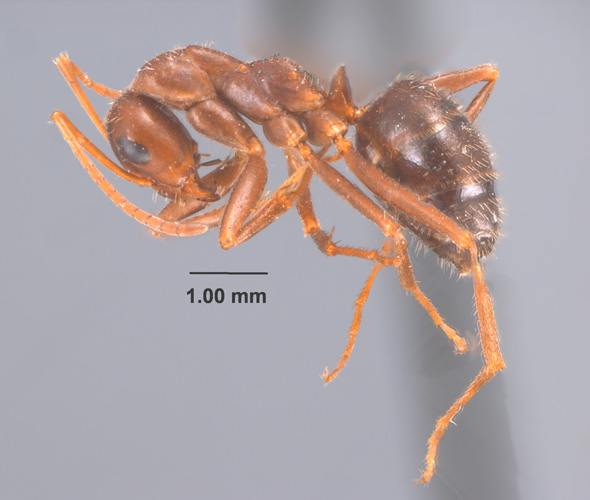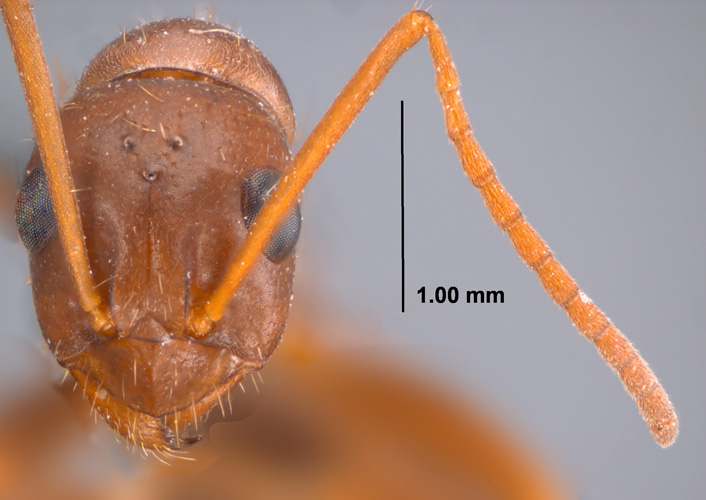Subfamily FORMICINAE Tribe FORMICINI Formica archboldi M.R.Smith |
Formica archboldi, frontal view of the head of a worker. (click image to enlarge). |
 |
Formica archboldi, side view of a worker (click image to enlarge). |
Formica archboldi is in the "pallidefulva" group, and like the other species in the group it has relatively long antennae and legs. This species is the most obviously sculptured and the smallest member of the group. Workers of this species have the largest eyes relative to head size of all species in this group. The head and gaster are very dark reddish-brown, appearing blackish or dark gray-brown in the field, and the alitrunk is often a little lighter than head. The dorsum of the gaster is at most weakly shining with the sheen dulled by numerous, shallow impressions, and appressed pubescence. The dorsal sclerites of alitrunk and gaster usually with moderately abundant, short, erect, brownish-gray erect macrochaetae, and pale grayish appressed microchaetae. The erect macrochaetae on the alitrunk and usually on the gaster are relatively short, straight and flattened with rounded, blunt or abruptly tapering tips; occasionally, at least some of those on gaster a bit longer and slightly curved, but less flattened and tapering. Formica archboldi, with it dark coloration and sculpture on the body is not likely to confused with any other species in the southeast. This species is commonly found in Florida’s upland pine and scrub habitats. It is reported by Smith (1979) from Alabama, but no county information is given, and it is not known to occur in Mississippi. It is known to nest in the soil beneath various grasses and sedges in scrub habitats, or in bare soil at the bases of shrubs or under oak leaf litter in Florida (Pers. Comm., James Trager). Links |



